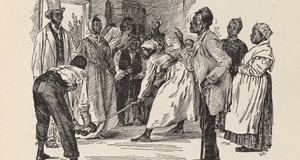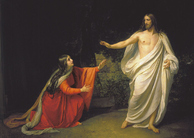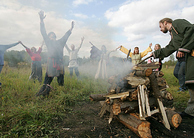Contradiction in Marriage and Love in the Song of Songs
By
2012, Vol. 4 No. 07 | pg. 1/2 | »
KEYWORDS:
The Song of Songs is a unique book in the Bible. There is no plot and no mention of God, but the piece says a lot about early Hebrew traditions surrounding marriage and love, using elaborate descriptions and complex relationships. The overall message of The Song of Songs has been hotly debated, and possibly this is because of the nature of its assembly and the culture from which it sprung. The Song was most likely a collage of wedding songs sung across the Jewish world, and because the ancient Jewish community was widely dispersed and interpreted their beliefs many different ways, the Song of Songs is thus able to make both the argument for the beauty of love and its possibility for danger. The Talmud is a collection of prestigious rabbis’ interpretations of the ethical and legal standards put forth in the Bible and the Mishnah. “The Mishnah looks much like a code of Jewish law, though it probably is something other than that. Full of unresolved legal disputes and liberally sprinkled with nonlegal materials, the Mishnah probably represents an early attempt to reduce the Oral Torah to an official compilation” (Holtz 131). Groups of rabbis then began to attempt to study and make sense of the contradictions of the Mishnah, and they put their thoughts together to make the Talmud. However, the result was the opposite. The Talmud “shows signs of insufficient editing: transitions, both within arguments, and also between sections, are weak, and parallel discussions appear in widely separated sections with no reference to one another, each sometimes duplicating, something contradicting the others” (Holtz 136). There is then no question why various sections of the Jewish world would believe very different things from others. They might pick out their favorites of the rabbis to agree with. It could be inferred that before the differing views of the rabbis were written down in the text of the Mishnah and the Talmud that the standards of separate communities were even more contradictory since they had no official text to refer to. Therefore the Song of Songs’s opposing messages are a logical result of individual and community interpretations of faith-based traditions and morals. One of the ethical issues discussed in the Bible and other Jewish texts is virginity. The Old Testament makes clear the Biblical stance on extramarital sex in Deuteronomy. If a man were to claim he doubted his new wife’s purity, and “no proof of the young woman’s virginity was to be found, she shall be brought to the door of her father’s house and there the men of her town shall stone her to death. She has done an outrageous thing in Israel by being promiscuous while still in her father’s house” (Deut. 22:20-21). Death is the punishment for a woman who dared to defile her body with sex before marriage. The Song displays this sentiment clearly. After the sexual union of the unmarried lovers, the bride has a dream in which she is beaten by the watchmen. “The watchmen came upon me, as they made their rounds of the city. They beat and wounded me, and those on the walls stripped off my cloak” (Song of Songs 5:7). Later in Jewish tradition, the bridegroom was required to sign a marriage contract pledging his loyalty to his bride, and setting the amount he was required to pay his wife if he ever divorced her. “The sum of the settlement was fixed at two hundred zuz for a virgin, and one hundred zuz for a non-virgin” (Bokser, 140). It seems then, that a virgin was twice as valuable than a non-virgin.In The Song, the bride’s virginity at the beginning of the book is made clear by the numerous references to walls and towers. When her lover comes to look for her at her parents’ house, she describes him thus: “There he stands outside our wall, peering in at the windows, gazing through the lattice” (Song of Songs 2:9). The couple has already at this point pledged love for each other proclaiming, “Your love is more fragrant than wine,” and, “How beautiful you are, my dearest, how beautiful,” but still he is outside her walls (Song of Songs 1:2, 1:15). The bridegroom praises his beloved multiple times for maintaining her virginity thus far. “Your neck is like David’s tower, which is built with encircling courses; a thousand bucklers hang upon it, and all are warriors’ shields” (Song of Songs 4:4). The bride is physically described as having armed warriors on her neck; no one is getting in without her permission. The bridegroom continues, “My sister, my bride, is a garden close-locked, a garden close-locked, a fountain sealed” (Song of Songs 4:12). Here, the man seems to be proclaiming to an unidentified audience the glory of his lover’s purity. The brothers at the end of The Song provide a final example of the metaphor of the girl’s virginity as a wall. “If she is a wall,” they say, “we shall build on it a silver parapet; if she is a door, we shall bar it with a plank of cedar wood” (Song of Songs 8:9). The girl’s virginity is shown to be a possession of her family; very similar to the way it is discussed in Deuteronomy. Yet within the Bible and other records of ancient Hebrew culture, there is some hope for characters such as this love-struck couple, who are drawn into having premarital sex. The Bibles states, “If a man happens to meet a virgin who is not pledged to be married and rapes her and they are discovered, he shall pay her father fifty shekels of silver. He must marry the young woman, for he has violated her. He can never divorce her as long as he lives” (Deut. 22:28). There seems to be no doubt that the man in the poem intends to wed the girl. He frequently calls her “my bride,” and if he is already intending to marry her, the punishment for having sex with her before they complete the process seems rather manageable and perhaps worth the risk. However, The Song, in its tendency to send mixed messages, also highlights the punishments of lustrous dalliances such as these. The first of these sometimes subtle dark messages comes in the midst of Solomon’s wedding procession. The warriors who accompany Solomon are “all expert in handling arms, each with his sword ready at his side against the terrors of the night” (Song of Songs 3:8). These terrors are vague until the second dream sequence when the bride is searching for her lover and instead is beaten by the watchman. The terrors are the results of disobeying the rules. This second dream sequence is right after the reference to the consummation of the lovers’ relationship, and because they have done a sinful thing, she is punished. Three times throughout the book, the bridegroom repeats the phrase, “I charge you, maidens of Jerusalem, by the spirits and the goddesses of the field: Do not rouse or awaken love until it is ready” (Song of Songs 2:7). This warning is very contradictory. The bridegroom, who throughout the entire song is seducing and flattering the bride, is repeating this advice to be careful with the dangerous creature that is love. Even the song’s Hebrew title Shir ha-Shirim, means loveliest song, in which, one would expect this kind of violence and caution not to be present (Phipps). Returning to ancient Hebrew tradition, there is a possibility that the couple discussed in The Song of Songs could be in some way betrothed, thus making their actions less severe in the eyes of their communities. The Hebrew word for betrothal is kiddushin. Betrothal is only the direct translation, however, and the concept differs slightly from our modern understanding of the word. Kiddushin essentially creates a marriage-like state. To end the relationship would require a divorce and infidelity would be considered adultery. A betrothal could be created in three ways: “a gift by the groom to the bride of any token of value to indicate his readiness to assume the obligations of married life; a written statement of proposal; [or] cohabitation, when it takes place in a context that establishes it clearly as a prelude to marriage” (Bokser 166). The third option “was frowned on and penalties were imposed on anyone who used it, even though the betrothal was deemed valid” (Bokser 166). The two lovers of the song are essentially creating their own betrothal. Phipps claims: “That the song focuses on the betrothed or married couple is made explicit by the term kallah, meaning ‘spouse’ which is frequently used in reference to the female partner” (6). In most sections of the book, the couple doesn’t seem to be married, as the bride’s brothers are unaware of her loss of virginity at the end and ask, “What shall we do with our sister when she is asked in marriage?” (Song of Songs 8:8). The lovers, as imaginary citizens of the ancient Hebrew world, would have been well aware of the rules, and known that if they were to consummate their relationship, they would become betrothed, even without consulting their parents or creating the proposal contract. And yet still, there is a passage in the Talmud, a collection of Jewish civil and cultural laws, that explicitly says, “Be praised, O Lord our God, King of the universe, who have hallowed us with your commandments and have instructed us concerning illicit marriages, and have forbidden us those betrothed to us, but have permitted us those married to us under the wedding canopy by the sacred rite of matrimony” (McGinn 141). It is then no wonder the song came out so utterly inconclusive on where it stands morally, when the writings of certain rabbis contradict what once was general traditional practice.Continued on Next Page » Suggested Reading from Inquiries Journal
Inquiries Journal provides undergraduate and graduate students around the world a platform for the wide dissemination of academic work over a range of core disciplines. Representing the work of students from hundreds of institutions around the globe, Inquiries Journal's large database of academic articles is completely free. Learn more | Blog | Submit Latest in Theology |

















